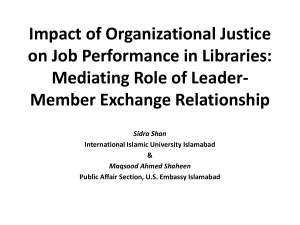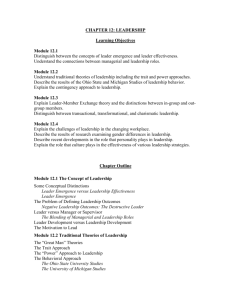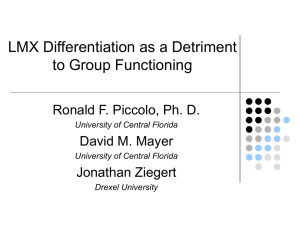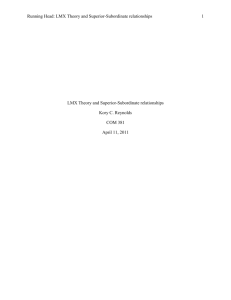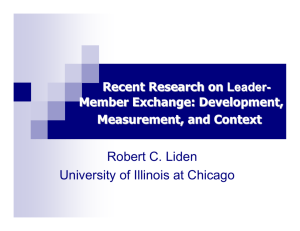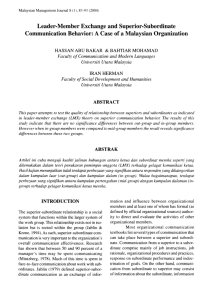ACHIEVING FAIRNESS WHEN TREATING EMPLOYEES
advertisement
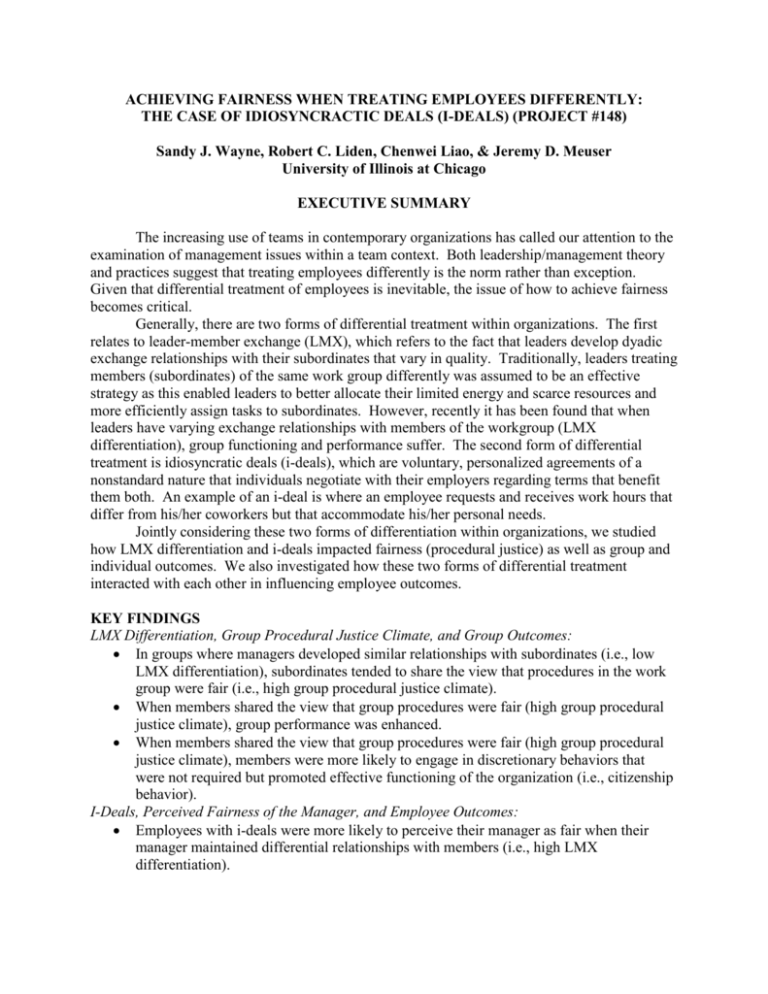
ACHIEVING FAIRNESS WHEN TREATING EMPLOYEES DIFFERENTLY: THE CASE OF IDIOSYNCRACTIC DEALS (I-DEALS) (PROJECT #148) Sandy J. Wayne, Robert C. Liden, Chenwei Liao, & Jeremy D. Meuser University of Illinois at Chicago EXECUTIVE SUMMARY The increasing use of teams in contemporary organizations has called our attention to the examination of management issues within a team context. Both leadership/management theory and practices suggest that treating employees differently is the norm rather than exception. Given that differential treatment of employees is inevitable, the issue of how to achieve fairness becomes critical. Generally, there are two forms of differential treatment within organizations. The first relates to leader-member exchange (LMX), which refers to the fact that leaders develop dyadic exchange relationships with their subordinates that vary in quality. Traditionally, leaders treating members (subordinates) of the same work group differently was assumed to be an effective strategy as this enabled leaders to better allocate their limited energy and scarce resources and more efficiently assign tasks to subordinates. However, recently it has been found that when leaders have varying exchange relationships with members of the workgroup (LMX differentiation), group functioning and performance suffer. The second form of differential treatment is idiosyncratic deals (i-deals), which are voluntary, personalized agreements of a nonstandard nature that individuals negotiate with their employers regarding terms that benefit them both. An example of an i-deal is where an employee requests and receives work hours that differ from his/her coworkers but that accommodate his/her personal needs. Jointly considering these two forms of differentiation within organizations, we studied how LMX differentiation and i-deals impacted fairness (procedural justice) as well as group and individual outcomes. We also investigated how these two forms of differential treatment interacted with each other in influencing employee outcomes. KEY FINDINGS LMX Differentiation, Group Procedural Justice Climate, and Group Outcomes: In groups where managers developed similar relationships with subordinates (i.e., low LMX differentiation), subordinates tended to share the view that procedures in the work group were fair (i.e., high group procedural justice climate). When members shared the view that group procedures were fair (high group procedural justice climate), group performance was enhanced. When members shared the view that group procedures were fair (high group procedural justice climate), members were more likely to engage in discretionary behaviors that were not required but promoted effective functioning of the organization (i.e., citizenship behavior). I-Deals, Perceived Fairness of the Manager, and Employee Outcomes: Employees with i-deals were more likely to perceive their manager as fair when their manager maintained differential relationships with members (i.e., high LMX differentiation). Specifically, different LMX relationships may have sensitized employees with respect to how they are treated relative to their coworkers. When managers developed high quality relationships with some members but not others, employees with i-deals may have noticed their unique treatment and thus viewed their manager to have fair procedures. Employee perceptions of their manager having fair procedures directly contributed to enhanced job satisfaction. Also, when employees perceived that their manager had fair procedures, they were more likely to engage in citizenship behavior. IMPLICATIONS FOR PRACTICE Our study found a negative relationship between LMX differentiation and group procedural justice climate. In addition, a higher level of procedural justice climate contributed to higher group performance and climate for helping others. Therefore, when group effectiveness is of top priority, managers are encouraged to maintain group harmony and boost group effectiveness by exhibiting consistent relationships toward group members. When managers develop high-quality exchange relationships with all of their members, we expect group members to perceive a climate of fairness, increasing group performance. However, we are not claiming that LMX differentiation is the only factor influencing group procedural justice climate. We believe that although LMX differentiation is significantly related to procedural justice climate within groups, there are other factors influencing procedural justice climate. If LMX differentiation is inevitable, attention can be directed to decision making rules that determine procedural justice in order to increase employee’s shared perceptions about fairness. Consequently, managers are advised to make decisions based on accurate information so as to suppress bias, allow mechanisms to correct poor decisions, and conform to moral and ethical standards. Our results also showed that high LMX differentiation made salient the differences among group members, which consequently strengthened the positive outcomes of those employees who had received i-deals. On the one hand, when LMX differentiation is inevitable, managers should pay special attention to the needs of group members without i-deals. On the other hand, managers should be aware that if they maintain relatively consistent exchange relationships with all subordinates, subordinates tend to pay less attention to the extent to which they have special arrangements (i-deals) that are different from their peers. STUDY METHODS Sixteen district managers (response rate = 100%), 71 store general managers (response rate = 93%) and 1,143 hourly employees (response rate = 71%) of 76 restaurants (34% of the chain’s total restaurants) located in 6 U.S. states participated in the study. To enhance data collection efficiency, we randomly selected restaurants within 10 metro areas containing the largest number of restaurants in the chain. Managers responded to a web-based survey and employees completed paper surveys on-site during paid work hours with a member of our research team present. We used hierarchical linear modeling technique to analyze the multilevel data.
